Special Report
18 of the Most Famous Car Brands That No Longer Exist
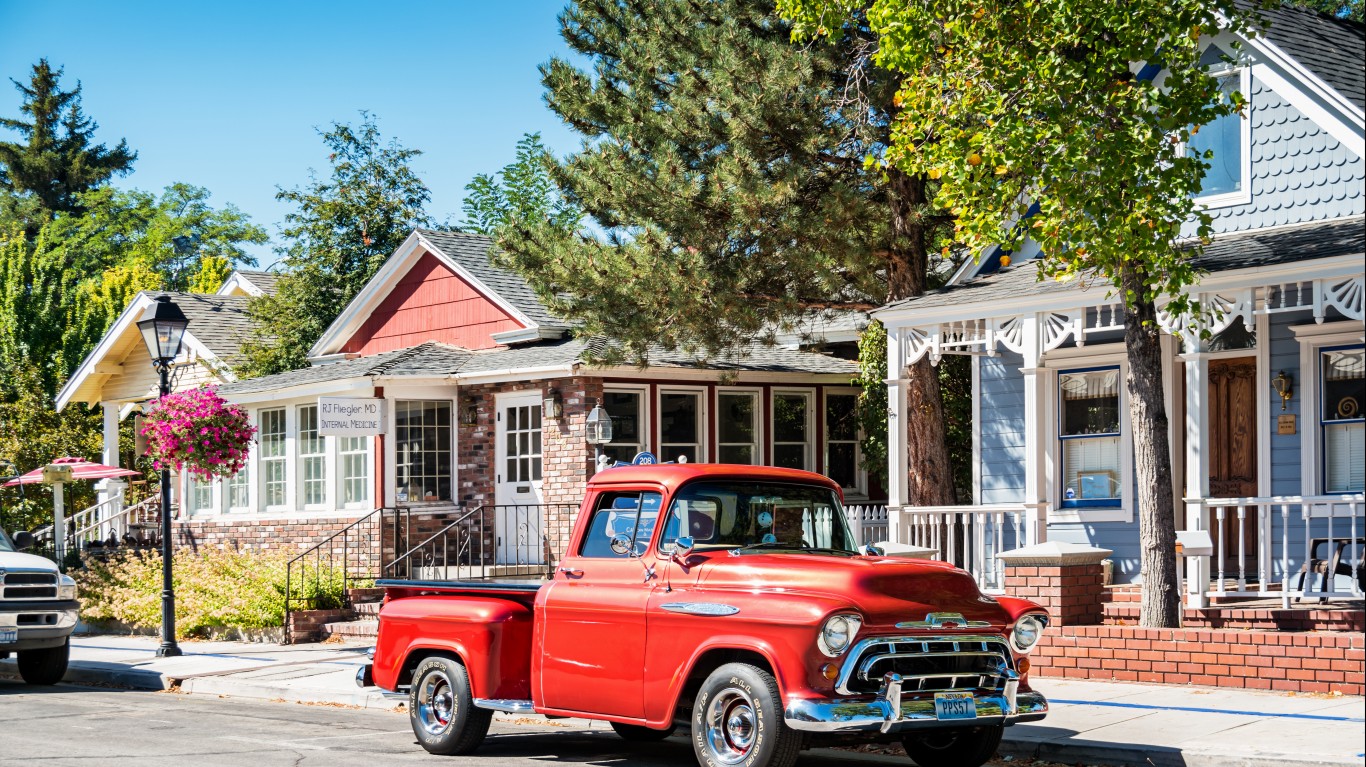
Published:

The COVID-19 pandemic and lockdown measures took a toll on U.S. auto sales, which declined 16% in 2020 compared to the previous year. But while most brands will likely recover as the country opens up again, at least one may not.
In the fourth quarter of 2020, just 735 Fiats were sold in the United States, less than half the sales from the year prior and almost 80% down from the year before. In its 10 years since being reintroduced in North America, the Italian brand has struggled to find a foothold, and it may not be long before parent Fiat Chrysler abandons the brand, at least in the United States.
Fiat would be only the most recent famous brand to become a thing of the past in America.
To identify famous car brands that no longer exist, 24/7 Wall St. researched the history of well-known but defunct U.S. automobile brands to identify the years they were active. We reviewed manufacturing figures and past media reports to identify popular models these companies produced.
In some cases, these brands were founded as standalone companies but later spent years as divisions of the Big Three automakers, General Motors, Ford Motor, and FCA (Fiat Chrysler Automobiles). The years active figures are meant to represent the years cars were produced with the brand name and not necessarily when the company started or went bankrupt.
Many of these brands were manufacturers that used their own nameplate on cars, while others were popular brands of big manufacturers that were eventually phased out when Americans no longer wanted to buy them.
Click here to see the famous car brands that no longer exist
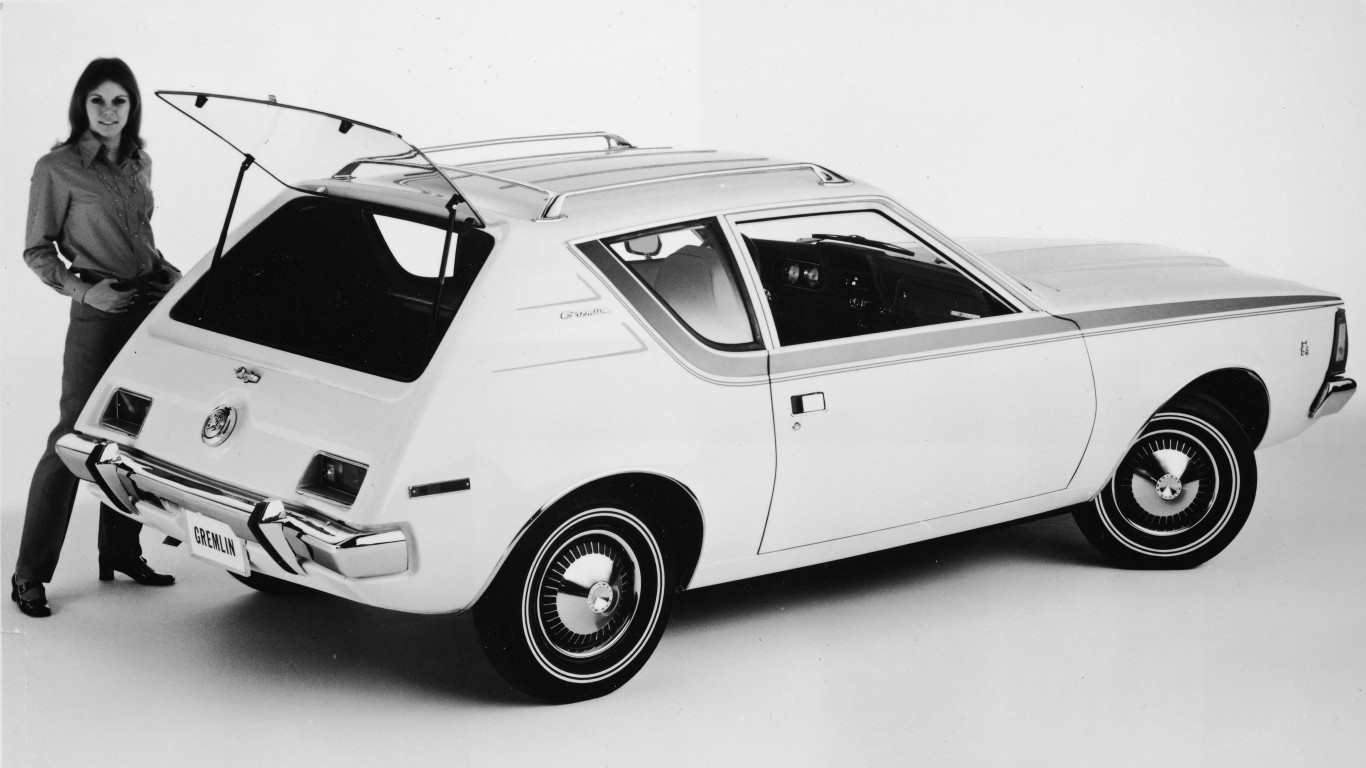
1. AMC
> Years active: 1954-1987
> Notable models: Pacer, Concord, AMX
AMC, or American Motors Corporation, is a good example of how U.S. automakers consolidated in the decades after World War II. Born out of a merger between two other automakers on this list — Hudson Motor Car and Nash-Kelvinator — AMC never became a huge success. AMC is known mainly for being the steward of the Jeep brand from 1970, when it acquired Kaiser-Jeep, until Chrysler bought and absorbed it in 1987. It also sold several models under the AMC nameplate, including the Pacer, Concord, and AMX.
[in-text-ad]
2. Checker
> Years active: 1923-1982
> Notable models: Checker, Marathon, Superba
Many people still associate the heavy, big yellow Checker taxi car with New York City of the ’60s and ’70s, but are likely not aware the car was actually produced in Kalamazoo, Michigan. A Russian immigrant founded the Checker Cab Manufacturing Company. One estimate from 1963 concluded that 35,000 of the nation’s 135,000 taxis were Checkers, used primarily in Chicago and New York but also in smaller cities. The company went defunct 13 years after the death of founder Morris Markin due to greater demand for fuel economy in the taxi business.
3. Continental
> Years active: 1956-1957
> Notable models: Mark II
Often confused with Ford’s Lincoln Continental, the Continental Mark II was actually the sole product of a separate Ford division and an expensive pet project of the company’s namesake family. Elegant but overpriced, the Mark II resembled some of the finer European luxury sedans of the time. Celebrities and politicians alike, including Barry Goldwater and Elvis, forked out twice the price of a Cadillac to be seen in a Mark II.
4. Delorean
> Years active: 1979-1982
> Notable models:DMC-12
Widely viewed as the car with the quirkiest back story, the DMC-12 will be forever seared into 1980s pop culture for its role in the 1985 Robert Zemeckis feel-good sci-fi film “Back to the Future.” Founded by auto industry bohemian renegade John DeLorean, DeLorean Motor Company produced only 9,000 of these sporty, stainless steel-bodied lemons with gullwing doors. As flawed as it was iconic, the DMC-12 was the only car ever built by Delorean before it went under in 1982.
[in-text-ad-2]
5. DeSoto
> Years active: 1928-1960
> Notable models: Deluxe, Fireflite, Adventurer
Chrysler’s DeSoto division plowed through the Great Depression, selling its low-priced Airflow cars that featured what at the time would have been considered futuristic, a distinct fastback rear profile. By the ’50s, DeSoto was well entrenched in the Atomic Age aesthetic, with large fins and rocket-like body styles. But a combination of spotty quality control, an industry pivot towards smaller cars, and two lengthy recessions in the ’50s compelled Chrysler to shut down the DeSoto operations.
6. Hudson
> Years active: 1909-1957
> Notable models: Super Six, Commodore, Hornet
Backed primarily by Detroit department store owner Joseph L. Hudson, a group of Detroit businessmen created Hudson Motor Car to make a sub-$1,000 sedan. The low-price Essex introduced in 1919 helped the company become (briefly) the third largest U.S. automaker by 1925, behind Ford and Chevrolet. Hudson was the first to introduce engine warning lights to the dashboard. Consolidation in the industry led to a merger between Hudson and Nash-Kelvinator in 1954, creating AMC. AMC stopped using the Hudson nameplate in 1957.
[in-text-ad]

7. Hummer
> Years active: 1992-2010
> Notable models:H1, H2, H3
The Hummer origins are in a contract AM General was awarded to develop high mobility multipurpose wheeled vehicles, or HMMWV, for the U.S. ground forces. AM General briefly made a civilian version, the M998, which General Motors took over and renamed the H1 by 1998. The M998 and H1 were the only two Hummers that actually closely resembled the military version. Ensuing models looked more like typical SUVs. Rising gasoline prices, changing consumer tastes, and the Great Recession of 2008 put an end to the Humvee era.
8. Kaiser
> Years active: 1945-1953
> Notable models: Dragon, Henry J, Manhattan
Born out of an alliance between renowned entrepreneur Henry J. Kaiser and Joseph Frazer, an experienced automotive executive, the Kaiser-Frazer Corporation (later Kaiser Motors) built about 750,000 cars in eight years, a staggering feat for an automotive startup. The company focused on small, stylish, well-built, low-cost, no frills sedans and even briefly sold cars to American GIs in post-war Japan. But like other indie automakers, Kaiser could not compete with Detroit’s Big Three.
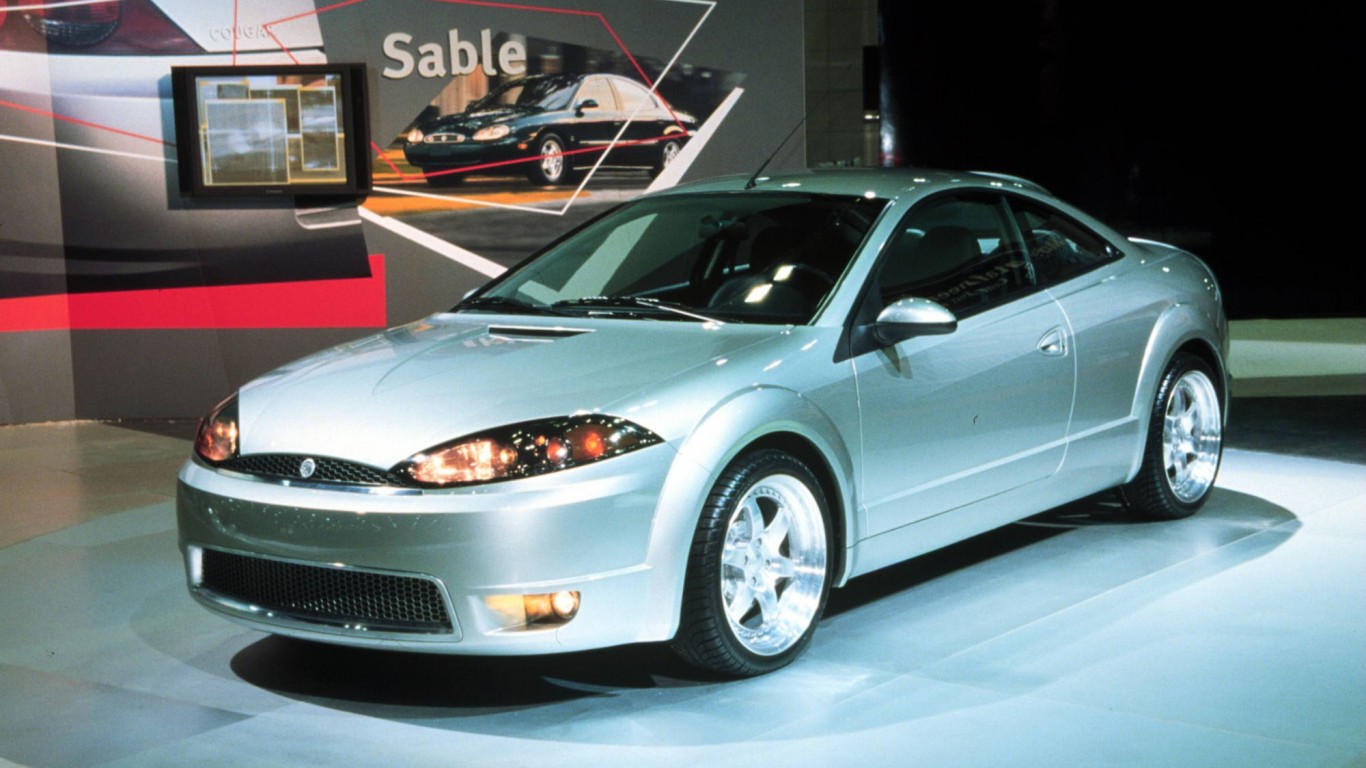
9. Mercury
> Years active: 1939-2010
> Notable models: Comet Cyclone, Cougar, Turnpike Cruiser
Conceived by Ford Motor as a premium brand, Mercury deftly evolved technologically and aesthetically along with consumer tastes from the ’40s to the ’60s. The 1955 classic film “Rebel Without A Cause” starring James Dean enshrined the 1949 Mercury, while the 1957 Turnpike
Cruiser was for its time an edgy two-door hardtop with a roll down rear window. The Cougar was Mercury’s answer to the Ford Mustang. In later years, the brand ran low on gas and was junked by Ford amid the Great Recession.
[in-text-ad-2]
10. Nash
> Years active: 1916-1957
> Notable models: 600, Airflyte, Metropolitan
Nash Motors Company rolled its first car off a Wisconsin assembly line in 1917, a year after it was founded by former General Motors President Charles W. Nash. The Model 671 was built as a low-cost, no frills sedan for working-class customers. The company went on an acquisitions spree in the 1920s, and in 1937 it became Nash-Kelvinator following a merger. Unable to compete with Detroit’s Big Three, Nash-Kelvinator merged with Hudson Motor Car in 1954, giving birth to AMC. The last models bearing the Nash brand produced in 1957.

11. Oldsmobile
> Years active: 1897-2004
> Notable models: Cutlass, Starfire, 442
The last Oldsmobile, a dark cherry Alero sedan, rolled out of a General Motors plant in Lansing, Michigan, in April 2004, capping an end to America’s then-oldest auto brand. Founded by Ransom E. Olds, the son of a machinist, the first Oldsmobiles were motorized carriages. By 1908, Oldsmobile became the second brand after Buick to be part of General Motors; it became a top brand for GM. After the Cutlass was a bestseller in the ’70s and ’80s, Oldsmobile sales began to decline until GM shuttered the brand in 2004.
[in-text-ad]
12. Packard
> Years active: 1899-1956
> Notable models: Super Eight, Clipper, Caribbean
The Packard brothers, James Ward and William Dowd, built their first buggy-style vehicle in 1899 — and the Packard Motor Car Company was born. Before and after World War II, Packard focused on smaller, lower-priced cars, ceding the market for luxury cars to Cadillac in the popular post-war luxury market. Costly production decisions and the leadership of a chief executive with no automotive experience ended Packard’s automotive business in the ’50s.
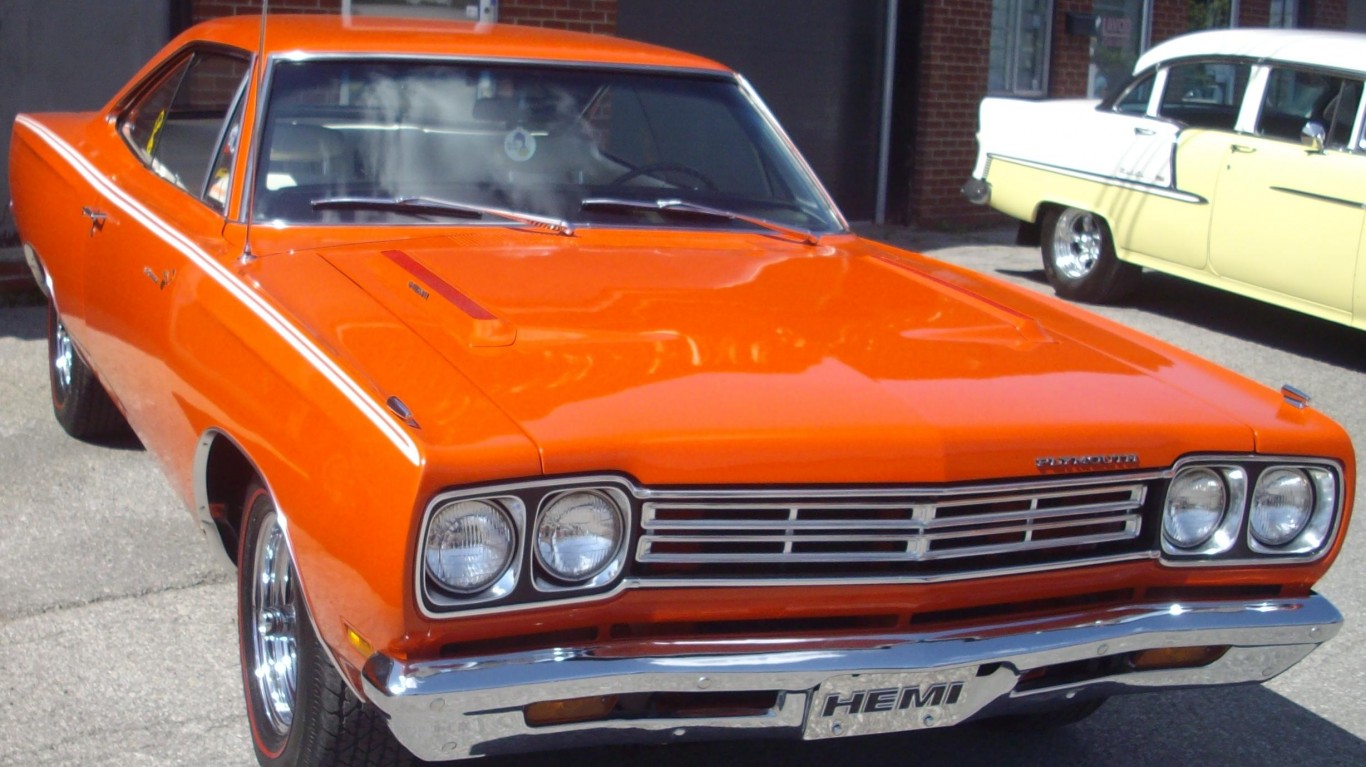
13. Plymouth
> Years active: 1928-2001
> Notable models: Fury, Barracuda, Road Runner
The last Plymouth, a Neon LX, rolled out of an Illinois Chrysler factory in 2001, ending more than seven decades of production. Walter P. Chrysler created Plymouth to attract young, first-time buyers with affordable cars. Sales peaked in the early ’70s following a string of popular models, but Plymouth eventually lost steam, failing to compete with rivals in the market for smaller economy cars.
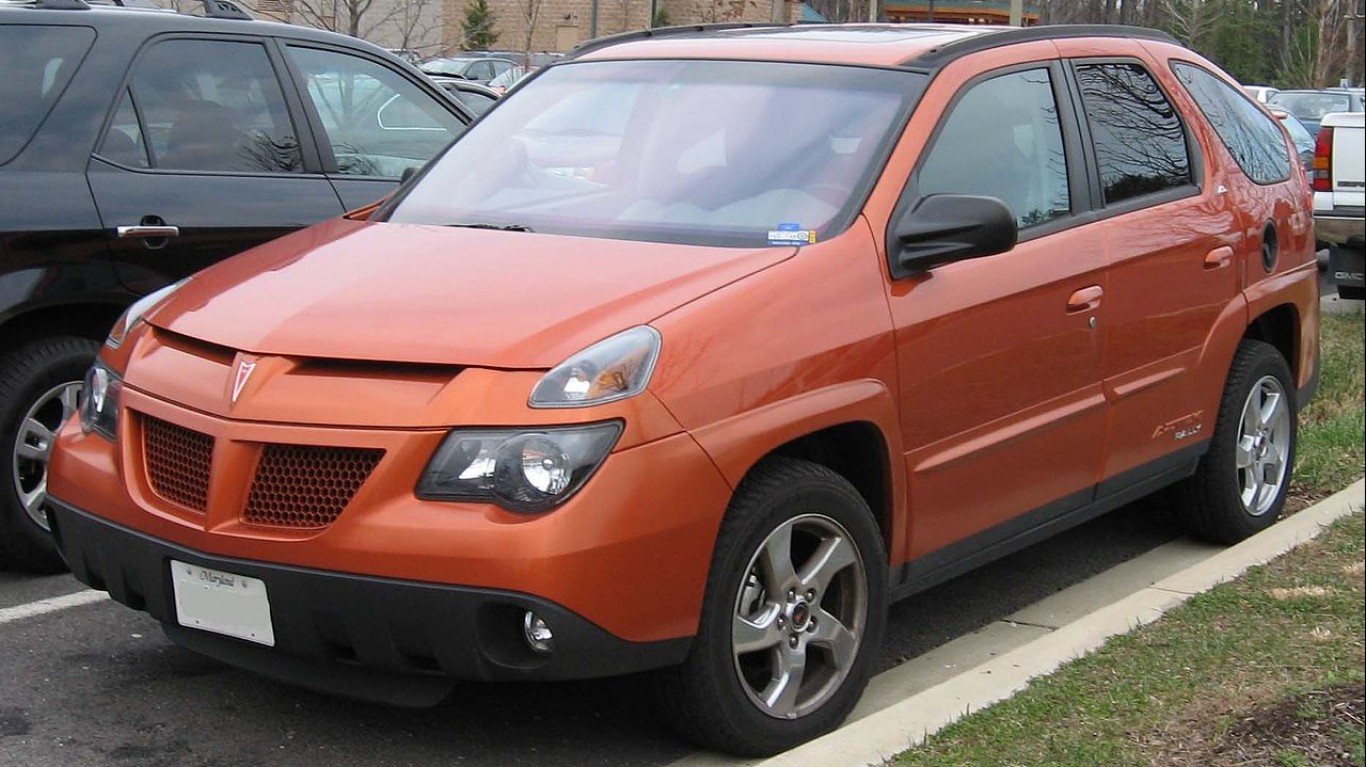
14. Pontiac
> Years active: 1926-2010
> Notable models: Bonneville, GTO, Trans Am
General Motors first introduced the Pontiac at a New York auto show in 1926. GM had bought the Pontiac, Michigan-based car company, founded by Edward Murphy and Alanson Brush, a designer of early Cadillacs. Demand for the stylish Pontiac sedans flourished in the ensuing decades, but the brand gradually lost its appeal in the ’90s. A brief attempt at reviving Pontiac failed as the Great Recession sent GM into a taxpayer-funded bailout and aggressive restructuring.
[in-text-ad-2]
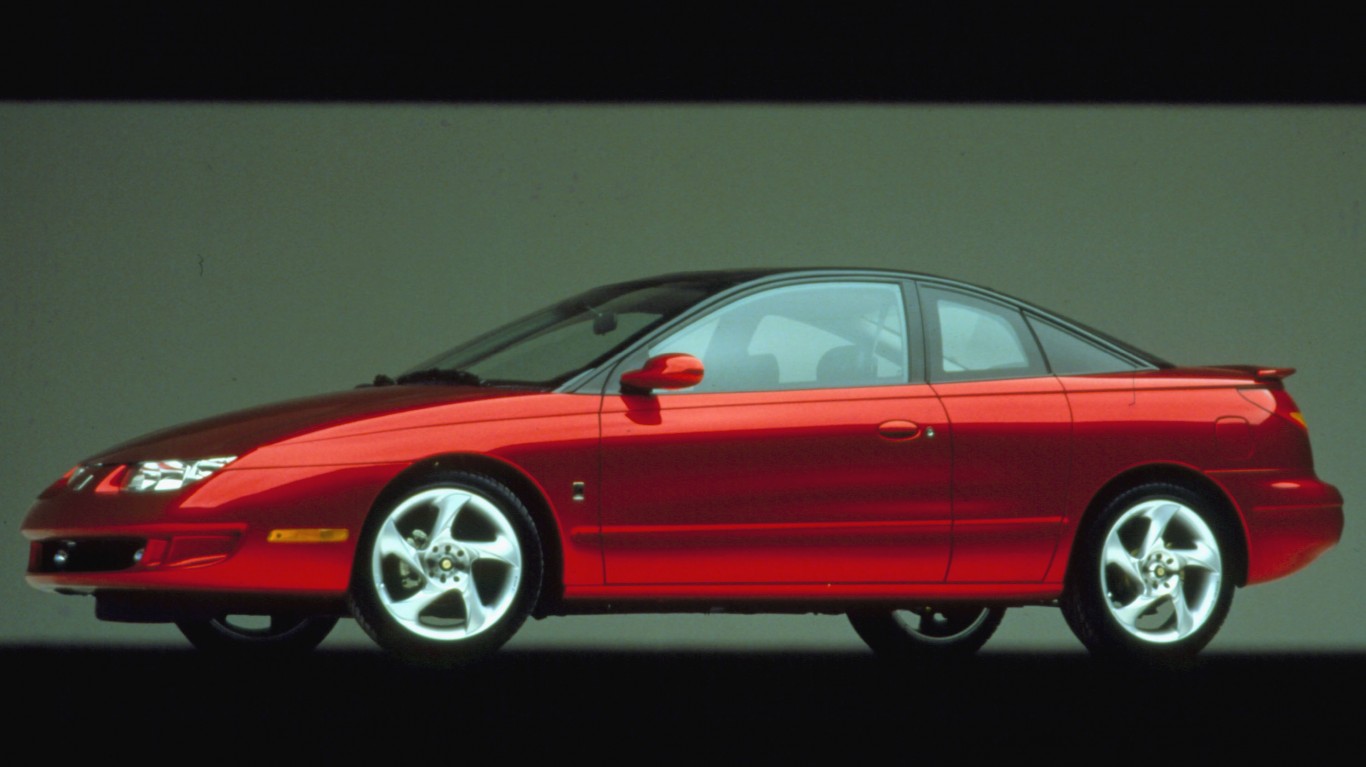
15. Saturn
> Years active: 1990-2009
> Notable models: Ion, Aura, Vue
General Motors established the Saturn automaker in an attempt to compete with the growing popularity of Japanese auto brands, which were offering more reliable cars for the same price as U.S.-made cars. Saturn’s first car, the S-Series, was a mold-breaker for GM and was well received, as were other ’90s-era models. But difficulties the early 2000s and the Great Recession killed three GM brands: Saturn, Hummer, and Pontiac.
16. Studebaker
> Years active: 1913-1966
> Notable models: Wagonaire, Golden Hawk, Avanti
A South Bend, Indiana, buggy and carriage maker made the began making electrically powered cars in 1902. In 1913, the company began selling branded gas-powered cars under the Studebaker name. After barely surviving the Depression, Studebaker produced popular concisely stylish models. Packard bought Studebaker in 1954, and its accountants quickly realized the company’s production costs were higher than its competitors. The company eventually collapsed under its own weight despite producing quality products.
[in-text-ad]
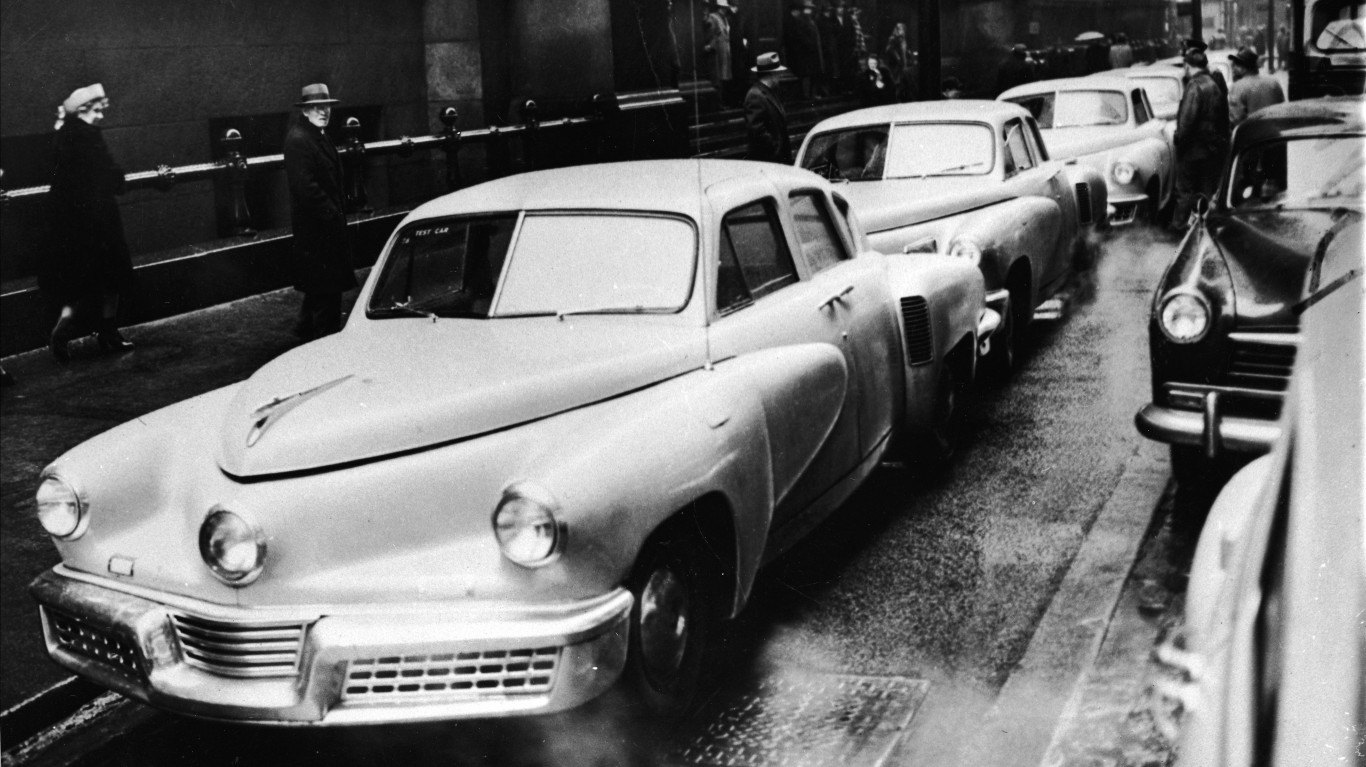
17. Tucker
> Years active: 1947-1948
> Notable models: Tucker ’48
The Tucker ’48 is one of the most striking examples of how producing an innovative, attractive product does not guarantee success. Preston Tucker was a visionary automobile entrepreneur, whose eponymous sedan was the first to include features like disc brakes and a center headlight that swivels during cornering. But Tucker’s financial troubles and accusations of stock fraud (for which Tucker was later found innocent) put an end to the Tucker brand almost before it started. Only 51 Tuckers were actually made.
18. Willys
> Years active: 1908-1963
> Notable models: Civilian Jeep, Jeep Station Wagon, Jeepster
Thanks to the popularity of his Willys-Knight sedan, automotive pioneer John North Willys grew Willys-Overland Motor Company into the second largest U.S. carmaker after Ford from 1912 to 1916. Willys is best known for building military Jeeps in World War II and the CJ, or Civilian Jeep, after the war. In 1953, Kaiser Motors bought Willys, and in 1963 the Willys name was retired when the company was renamed Kaiser-Jeep. Kaiser-Jeep was later bought by AMC in 1970.
Retirement planning doesn’t have to feel overwhelming. The key is finding expert guidance—and SmartAsset’s simple quiz makes it easier than ever for you to connect with a vetted financial advisor.
Here’s how it works:
Why wait? Start building the retirement you’ve always dreamed of. Click here to get started today!
Thank you for reading! Have some feedback for us?
Contact the 24/7 Wall St. editorial team.